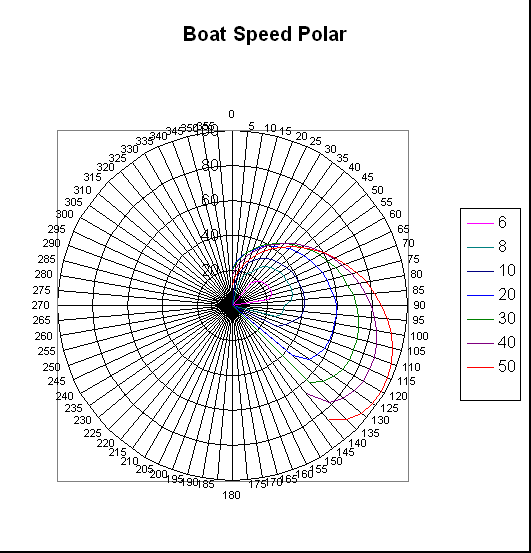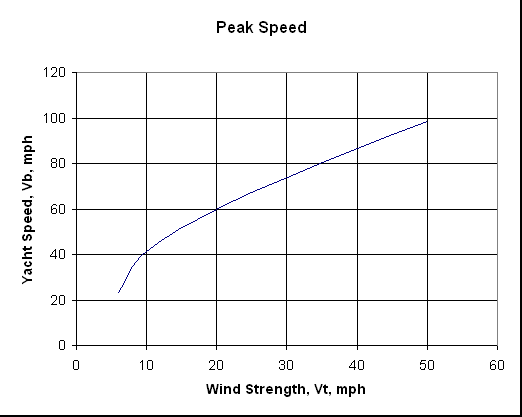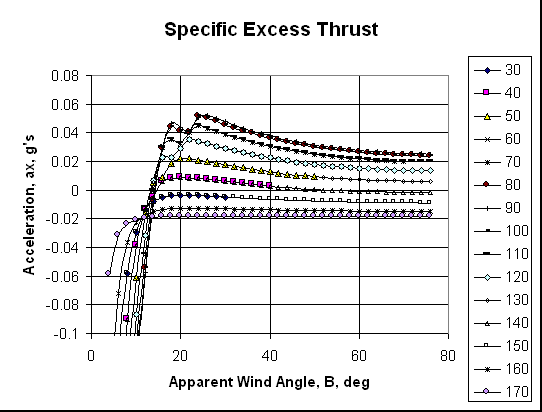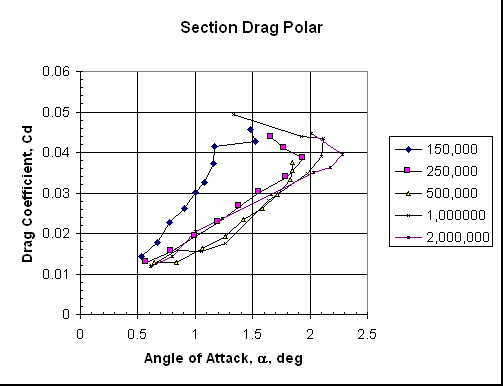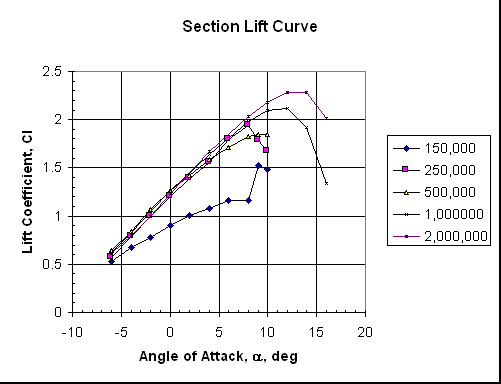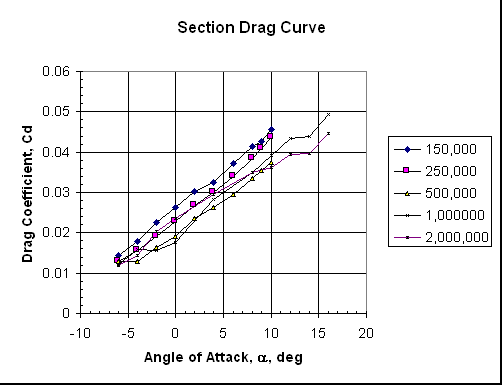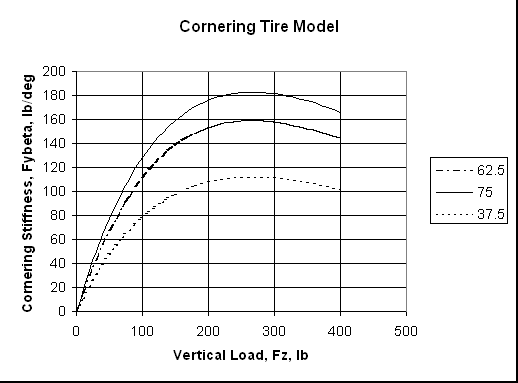Landyacht Performance Prediction
These charts show the predicted performance for a notional rigid winged landyacht. It conforms to the US Class IV open class rules. The wing section had a 30% chord slotted flap, and the main wing section was custom designed to provide high lift at low Reynolds numbers in conjunction with the flap.
These results were calculated with a more sophisticated model than the simple MathCad model, but the basic relationships are the same. The principal difference was the use of tabular aerodynamic section data rather than the parabolic drag polar used in the MathCad model.
